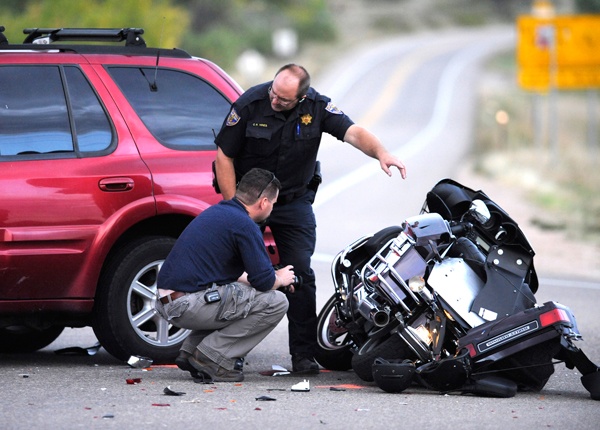
Causes of Traffic Accidents & Collisions: Speeding, Distractions & Intoxation
Updated Dec. 25, 2020Across previous modules in this course, we have discussed the primary causes of traffic accidents and collisions. To recap, these are: the actions of the driver(s) involved; the condition of the road; the condition of the vehicle(s) involved.
Poor driving behavior is by far the most prominent cause and can be identified at the root of nearly all traffic accidents. Other dangers such as icy roads or malfunctioning brakes can dramatically increase the chances of a collision occurring, but they do not make a collision inevitable. In these dangerous situations, the action you take behind the wheel will determine whether an accident ensues.
Driver-error is thought to account for roughly 94% of all traffic collisions. The mistakes made by the drivers in question fall into one of two categories:
- Poor performance errors (e.g. failing to recognize a hazard or bad decision making)
- Non-performance errors (e.g. being intoxicated or falling asleep at the wheel)
Among these, recognition errors and decision-making errors occur the most frequently. Recognition errors are usually the result of driving distractions or failing to scan the roadway properly. Some of the most common decision-making errors are speeding, executing illegal maneuvers and inaccurately predicting the behavior of another road user.
Collision contributors
When serious or deadly collisions result from driver error, they are often associated with one of these contributing factors:
- 1

Distraction.
Distracted drivers are more prone to hesitation and may rush important decisions. They are also more likely to miss hazards when scanning the roadway. - 2

High-speed.
The faster a vehicle is traveling, the harder it is for the driver to process visual information about the roadway. Controlling a vehicle at high-speed requires precise gentle movements. It is easy to misjudge distances and maneuver too sharply. - 3

Intoxication.
A driver’s vision, reflexes, coordination and reasoning ability are all adversely affected by alcohol and drugs. - 4

Fatigue.
Mental and physical fatigue will slow reflexes, negatively affect perception and impede judgment. - 5

Aggression.
Extreme aggression can lead drivers to act irresponsibly and destructively, with little care for safety. When experiencing road rage, a motorist may deliberately ram another vehicle, run a red light or cut off another vehicle. These behaviors frequently lead to collisions.
Preventing accidents
The fact that driver error is the main cause behind so many accidents and collisions means that there is a great deal we can do to prevent these incidents. Drivers are not at the mercy of random or unforeseeable events. Your fate on the road is determined largely by the decisions you make before driving and while in the driver’s seat.
As soon as you begin driving, you must get into the habit of assessing your mental and physical well-being before getting into the car. Remember that your ability to make sound decisions and react in a timely manner depends on you being fully present and alert behind the wheel. Do not drive if you are even slightly impaired by intoxication, tiredness, illness or emotional distress. Under these conditions, you will be extremely susceptible to making non-performance errors that could result in a collision.
The way you interact with other roadway users is also incredibly important. As a driver, you will be a small part of a much larger highway transportation “ecosystem” which can only run smoothly when all road users work together. This involves driving in a way that facilitates traffic flow, communicating with other road users to make them aware of your intentions and behaving courteously toward other motorists. An aggressive “every man for himself” attitude will quickly lead to conflict, altercations and dangerous mistakes.
To avoid recognition errors, you must always be attentive to the roadway, despite the many distractions inside and outside the vehicle threatening to lead you astray. Your ability to act pre-emptively against potential dangers depends on being able to spot those dangers soon enough to react. This requires continuous adherence to active roadway search protocols, as discussed in previous blocks of this course.
Remember that there is no such thing as a “perfect” driver. All motorists make mistakes from time to time – including you! Whether these mistakes turn into catastrophic collisions depends on how nearby road users react in response to another driver’s mistake. If you expect mistakes, think ahead and always have an escape plan in every driving situation, other driver’s errors should not take you by surprise.




